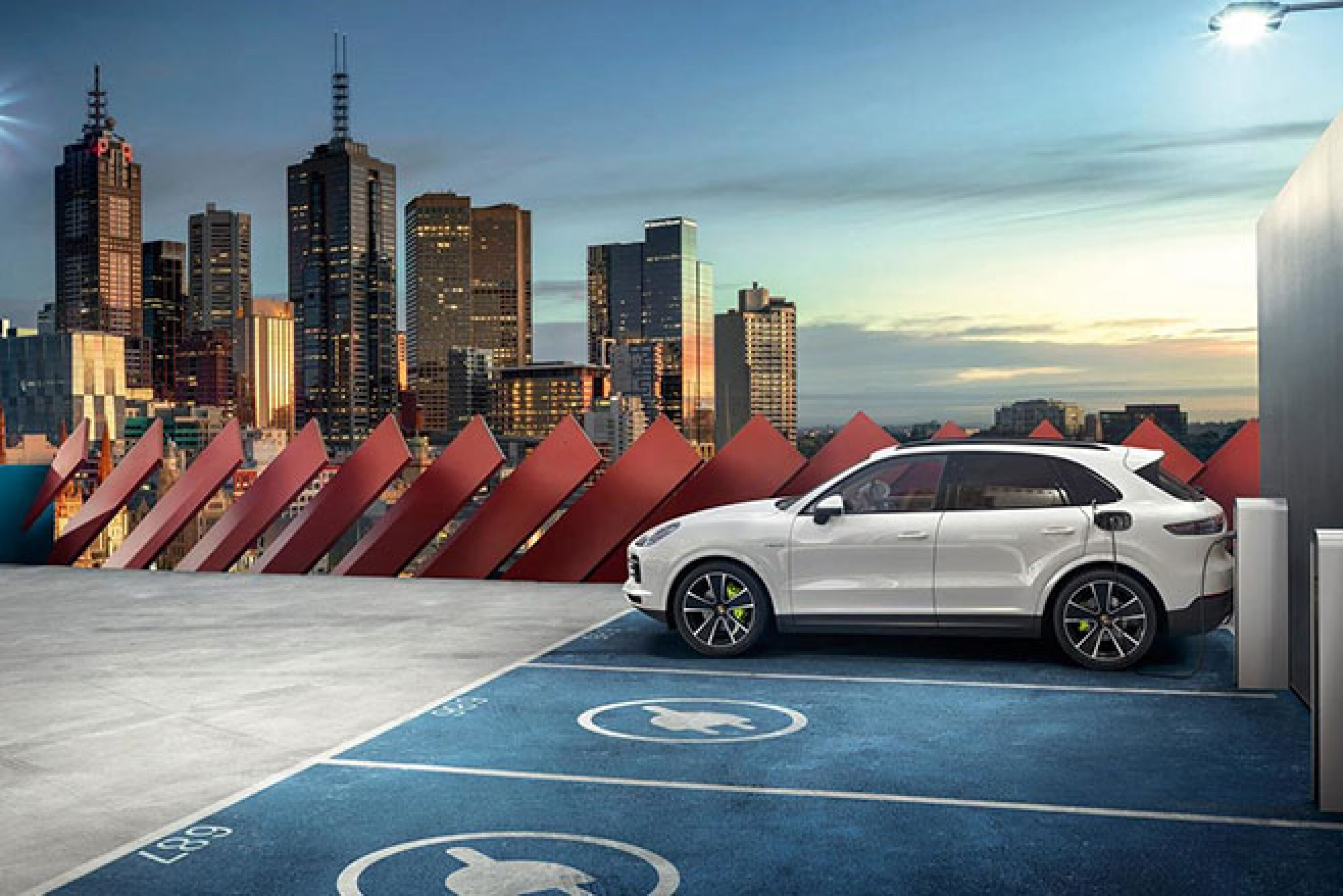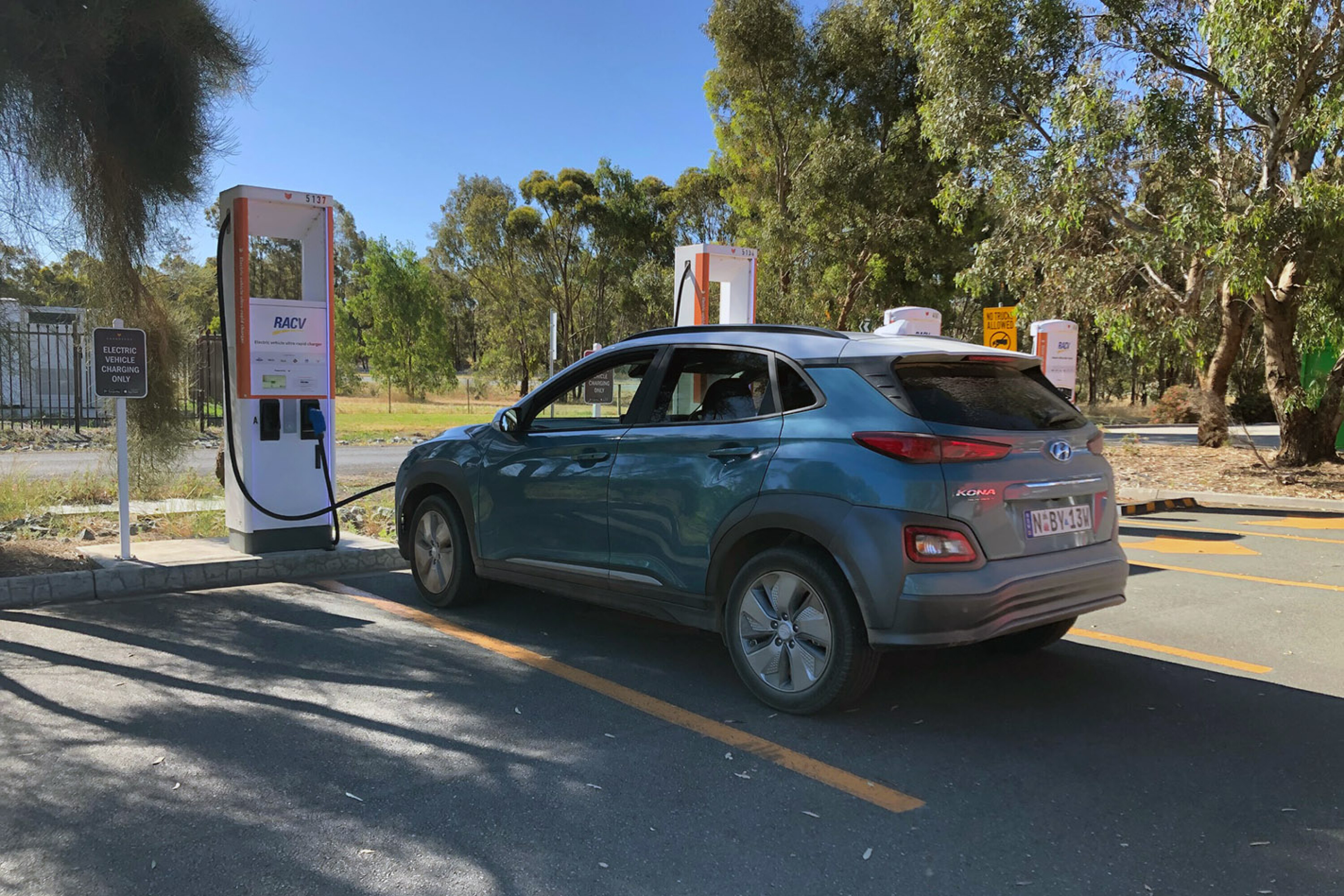
The Electric Vehicle Council (EVC) has suggested a range of measures to address Australia’s often patchy and unreliable EV public charging infrastructure.
Snapshot
- EVC suggests more EV charging stations needed at each location
- Charging site needed at least every 70km apart on highways, 5km apart in metro
- Maintenance, cleaning, internet, natural disaster recovery measures
Importantly, the lobby organisation emphasised the glaring need to have more ‘redundancy’ at each charging location, akin to a supermarket checkout or fuel station.
“Multiple EV chargers at a location, each with 95 per cent uptime, will almost certainly deliver better consumer outcomes in terms of availability than a single EV charger with 99 per cent uptime,” the EVC white paper said [PDF ↗].
The EVC recommended having multiple DC fast-charging stations at each site – with each location spaced at most 70 kilometres apart on highways or up to 5km in metropolitan areas – to reduce the likelihood of queuing, while providing backups for any out-of-order stalls.
Currently, most charging providers in Australia only offer one or two stations at each site. But some feature four or more stalls, especially along major interstate highways and all Tesla Superchargers.

Other failsafes were also recommended, including:
- A backup modem or SIM card for constant connectivity
- on-site backup power
- Maintenance plans to tackle vandalism
- Managing vegetation and cleaning
- Enforcing parking infringement notices
The EV Council also warned charging networks to consider the potential impacts from natural disasters, such as flooding and bushfires.
To combat such emergencies, networks should consider having temporary stations capable of around 100kW DC (powered by a carbon-neutral biofuel generator) ready for deployment as needed.
Last month, the Australian Government pledged a major project with the NRMA to have an EV fast-charging site spread every 150 kilometres apart nationally to fill black spots in regional and remote areas.

The white paper publication comes as the EVC made a series of recommendations for the federal government, which is currently drafting its promised fuel efficiency standards – intended to finally set a carbon dioxide exhaust emissions limit based on the average of all vehicles each car manufacturer sells.
Echoing the Solar Citizens advocacy group, it called for:
- Setting ambitious targets from 2024 until at least 2030 in order to catch up with countries overseas
- Conducting regular reviews
- A strict financial penalty for exceeding the threshold
- Separate standards for passenger cars, off-road SUVs and LCVs u2013 but with the same goal to have EVs be at least half of new car sales nationally by 2030.
When legislated, the major public policy will encourage carmakers to bring more zero- and low-emissions model supply and choice to Australians.
More EV stories to help you choose the best car for your needs
- ? EV news, reviews, advice & guides
- ❓ Short & sweet: Your EV questions answered
- ⚡ New EVs: Everything coming to Australia
- ? Australia’s EVs with the longest driving range
- ⚖️ Best-value EVs by driving range
- ? How much do EVs cost in Australia?
- ? How much more expensive are EVs?
- ⚖️ Number crunching: Is it time to switch to an EV?
- ♻ Should you buy a used EV?
- ?️ Are EVs more expensive to insure?
- ? Costs compared: Charging an EV vs fueling a car
- ? EV charging guide
- ?? EV servicing explained
- ? EV battery types explained
- ? When do EV batteries need replacing?
- ? Hydrogen v EVs: What’s best for Oz?
MORE advice stories to help you with buying and owning a car
We recommend
-
 News
NewsWaze makes EV charging stops easier
The popular navigation app is harnessing its crowdsource feature to ensure drivers can find reliable and available public EV charging stations
-
 News
NewsEvie Networks marks 100th EV charging station
Electric car charging provider Evie Networks has launched its 100th station hub to end off the year, with even bolder plans in 2023
-
 Features
FeaturesEV Guide: Home charging your electric car
When your garage becomes your new favourite fuel station




